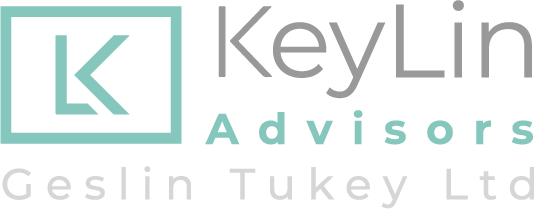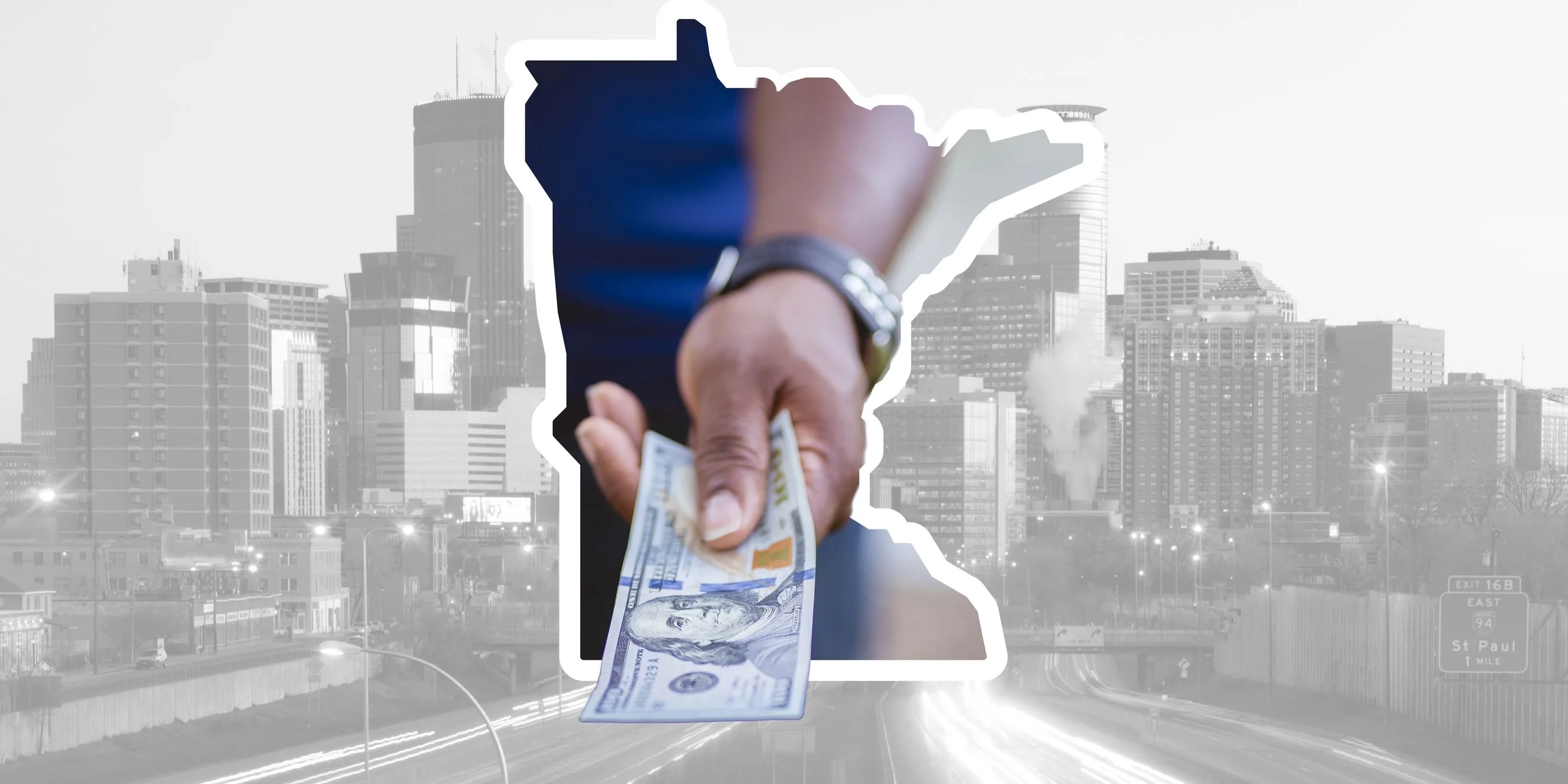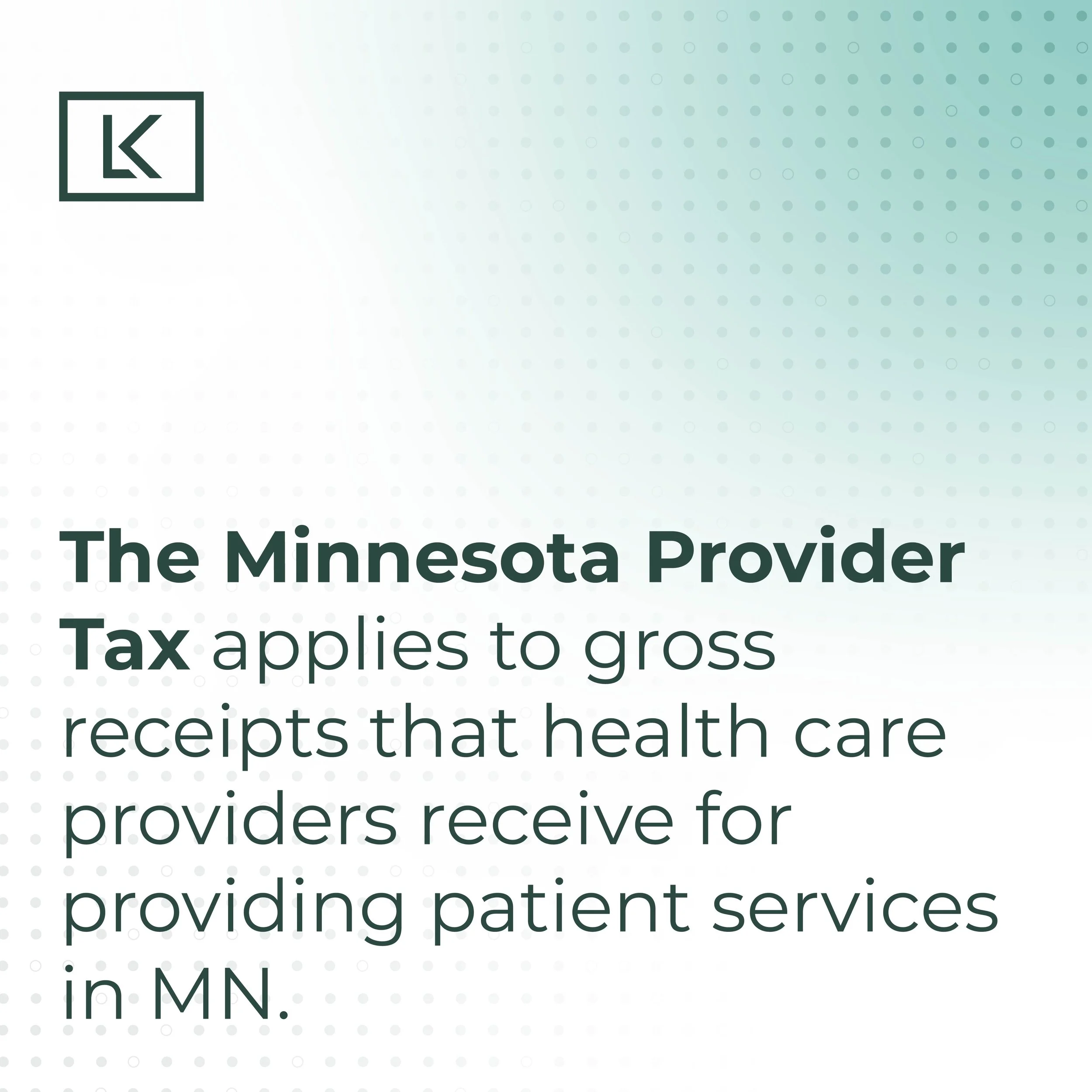Minnesota Provider Tax: A Beginner’s Guide
Are you a healthcare provider facing the MinnesotaCare Provider Tax? Curious about what this tax is, where it goes, and why you have to pay it? Look no further. We’re breaking down the basics of the Minnesota Provider Tax for a simple, easy-to-understand guide.
What is the Minnesota Provider Tax?
The Minnesota Provider Tax is a tax paid by healthcare providers to support Minnesota’s Health Care Access Fund. Established in 1992, this tax funds MinnesotaCare, a state healthcare program for low-income Minnesotans. For 2024, the tax rate is 1.8%, and it applies to all receipts starting January 1, 2024.
Who Pays the Minnesota Provider Tax?
According to the Minnesota Department of Revenue, “the Minnesota Provider Tax applies to gross receipts that health care providers receive for providing patient services in Minnesota.”
Essentially, this tax applies to hospitals, surgical centers, ambulance services, wholesale drug distributors, and other healthcare providers, including self-employed healthcare providers. If you’re a healthcare provider who is regulated by the State or the employer of a regulated healthcare provider, this likely applies to you. This includes a variety of doctors, dentists, nurses, psychologists, physical therapists, and others.
Other people who are impacted by the Minnesota Provider Tax include those who are eligible for reimbursement through the Medical Assistance program, individuals or businesses that sell and/or repair prescription eyewear or hearing aids, and individuals or businesses that provide patient services in conjunction with a healthcare provider.
Keep in mind that remote sellers — out-of-state businesses that sell products to Minnesotan customers — may also need to file a Provider Tax Return, depending on the circumstances.
How Do I Pay the Minnesota Provider Tax?
The Minnesota Provider Tax is paid to the Department of Revenue quarterly, depending on your tax situation.
If you are required to make quarterly estimated payments, your quarterly payments must be either 90% of a fourth of your actual tax for the current year, or one-fourth of your actual tax for the previous year. You can use the smaller of the two numbers and divide it by four to arrive at the minimum quarterly payment you must make.
(Estimated payments are due in April, June, October, and January. But remember — you’ll still need to file your taxes for the year in March of the following year.)
Keep in mind that this may not be your actual tax liability. If your estimated taxes are late or less than what you are required to pay, you’ll need to pay additional charges. Additional charges will be calculated when you file your annual return. If you overpay, however, you will receive that money back when you file.
According to the Department of Revenue, your best chance at not underpaying is to “calculate estimated tax payments based on your tax for the previous year.”
Pay the Minnesota Provider Tax with KeyLin
The Minnesota Provider Tax is a unique tax we pay here in Minnesota that supports others in our great state. If you have questions or concerns about your Provider Tax, please feel free to reach out for your free first consultation, and our tax experts can guide you through it.


